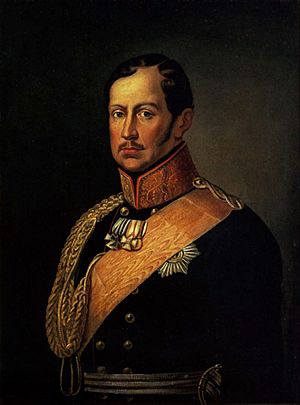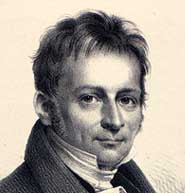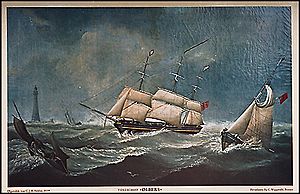Old Lutherans facts for kids
Old Lutherans were a group of Lutherans in Germany, especially in a part called Silesia, during the 1830s and 1840s. They lived in the Kingdom of Prussia. These Lutherans refused to join a new church group called the Prussian Union of churches.
The king of Prussia at the time, Frederick William III, wanted to unite all the Protestant churches in his kingdom. He aimed to make their worship services, organization, and even church buildings look the same. Through several announcements, the Church of the Prussian Union was created. This new church brought together most Lutherans and a smaller group called the Reformed. The main result was that the Prussian government, with the king as its head, had full control over church matters.
Because the Old Lutherans refused to join, they faced difficulties. Many of them decided to move to other countries like Australia, Canada, and the United States. This led to the start of important Lutheran church groups in those places.
Today, the spirit of the Old Lutherans lives on in the Independent Evangelical Lutheran Church in modern Germany.
Contents
The Prussian Union and Church Changes
In 1799, King Frederick William III of Prussia ordered a new common service book, called an Agenda, to be made. This book was meant for both Lutheran and Reformed congregations to use during their worship. A special group was formed to create this new service book.
After more than 20 years, the common service book was finally ready in 1821. However, many Lutherans did not like it. They felt that the new book changed the important words about the Lord's Supper. They believed it no longer clearly stated that Christ was truly present in the bread and wine.
In 1822, all Protestant churches were told to use only this new service book for their worship. Many Lutheran pastors across Prussia strongly disagreed and did not follow this order.
The service book was later changed a bit to try and calm down the upset Lutherans. But in 1830, King Frederick William ordered all Protestant churches in Prussia to celebrate the Lord's Supper using the new book.
Instead of bringing people together, as the king hoped, this order caused a lot of disagreement among Lutheran congregations.
Standing Up for Beliefs
To try and reach a compromise with those who disagreed, now called "Old Lutherans," King Frederick William made another announcement in 1834. He said that the Union would only be about church rules and worship services. He added that individual churches could keep their own beliefs. However, he also said that those who disagreed could not form their own separate groups.
Despite this new order, many Lutheran pastors and churches continued to use their old service books and sacramental rites.
When officials found out about this defiance, they looked for those who went against the king's order. Pastors who were caught were stopped from doing their ministry. If these stopped pastors were caught acting as pastors again, they were put in prison.
One of the main leaders of the Old Lutherans was Johann Gottfried Scheibel (1783-1843). Scheibel was a professor of theology in Breslau. He was suspended from his job in 1830 because he disagreed with the Union.
Scheibel became famous as a leader of the Old Lutherans because he spoke, preached, and wrote against the Union. This led to him losing his job as a professor.
Scheibel was not afraid and continued to express his disagreement as he moved to new cities. He was in Dresden in 1832 but was told to leave that same year. He moved to Hermsdorf, where he was also asked to leave in 1836. Then he went to Glauchau and Nuremberg.
He passed away in Nuremberg around the time he was going to get his professor job back in Breslau.
After Scheibel, Eduard Huschke became the leader of the Old Lutherans. Other well-known Old Lutherans included Henrik Steffens, H. E. F. Guericke, Kahnis, and Rudolf Rocholl.
The Union also caused a strong reaction from Lutherans who wanted to keep their traditional beliefs, a movement called Neo-Lutheranism.
When King Frederick William died in 1840, the difficulties faced by the Old Lutherans became much easier. However, Old Lutherans still felt like outsiders. Their clergy, for example, did not have the same rights and support as the clergy of the Union church.
The Old Lutherans formed several church groups called synods. One important one was the Evangelical Lutheran Church in Prussia, formed in 1841 and officially recognized in 1845. These groups eventually joined together to form the current Independent Evangelical-Lutheran Church (SELK).
Moving for Freedom: Old Lutherans Emigrate
By 1835, many Old Lutheran groups who disagreed with the Union started thinking about moving away. They saw emigration as a way to find religious freedom. Some groups moved to Australia and the United States in the years leading up to 1841.
To Australia and New Zealand
The first large group of Lutherans to arrive in Australia were immigrants from Prussia. They came to South Australia in 1838 with their Pastor August Kavel. These immigrants started three settlements: Klemzig, Hahndorf, and Glen Osmond. In 1841, a second group of Prussian immigrants arrived, led by Pastor Gotthard Fritzsche. His group settled in Lobethal and Bethanien.
The Lutherans in South Australia also set up the Killalpaninna Mission (Bethesda) Station at Cooper's Creek. Johann Flierl, a pioneer missionary, worked there for seven years (1878-1885). When he left in 1885, his cousin, also named Johann Flierl, took his place at the mission.
There have been five main waves of migration that brought Lutherans to New Zealand:
- In the 1840s, people came from Germany.
- In the 1860s, a second group of migrants from Germany settled in Marton. Some of them had first lived in Australia.
- In the 1870s, many people arrived from Denmark and other parts of Scandinavia.
- After World War II, many more came from Europe.
- In the early 2000s, people started arriving from Africa, Asia, and other parts of the world.
Lutheran missionaries first arrived in New Zealand in 1843. This was just three years after the Treaty of Waitangi was signed.
The first Lutheran Missionaries arrived in Otago in January 1843. They found that other mission groups, like the Wesleyan and Anglican Societies, were already well established. So, they decided to move to the Chatham Islands, arriving there on February 20, 1843. It was said they had "...faith in their souls and next to nothing in their pockets."
In June of the same year, 1843, a ship full of German migrants arrived in Nelson. They settled in what is now Upper Moutere and built a church. A lively Lutheran church still meets at this location today.
In the 1860s, several German people arrived in the Rangitikei area. They convinced others from German-speaking communities in South Australia to join them. Most first settled along Pukepapa Road in Marton. This is still where the St Martin's Lutheran Church is located.
In the 1870s, other Lutheran migrants arrived in New Zealand. This included many people from Scandinavia. They settled in the Wairarapa, Manawatu, and Hawkes Bay regions. Towns like Norsewood and Dannevirke were started by these settlers.
To North America
Many groups of Old Lutherans also moved to the United States during this time. One group from Prussia had about 1000 Old Lutherans. They were from Erfurt, Magdeburg, and nearby areas. They were led by J. A. A. Grabau. They moved to the United States in the summer of 1839. Grabau and his friends started the "Synod of Lutherans immigrated from Prussia," later known as the Buffalo Synod.
Thousands of other Old Lutherans settled in the Midwest and Upper Midwest parts of the United States during this period. Besides Old Lutherans, there were also Neo-Lutheran immigrants from the German Kingdom of Saxony. In Saxony, there was no church union like in Prussia. Lutheran pastor Martin Stephan and almost 1100 other Saxon Lutherans left for the United States in November 1838. They eventually settled in and around St. Louis, Missouri during the Saxon Lutheran immigration of 1838–39. These groups were the start of the Lutheran Church–Missouri Synod.




